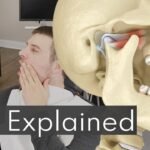Table of Contents
The Role of Medical Conditions in TMJ: Exploring the Link Between Systemic Diseases and Jaw Disorders
Temporomandibular joint disorder (TMJ) is a multifactorial condition that can be influenced by various medical conditions. Research has shown a significant link between systemic diseases and jaw disorders, highlighting the impact of overall health on the jaw joint. Understanding this connection is essential for both medical professionals and patients alike.
One medical condition that has been closely associated with TMJ is arthritis. Both rheumatoid arthritis and osteoarthritis can affect the temporomandibular joint, leading to pain, inflammation, and limited jaw movement. In fact, studies have indicated that individuals with arthritis are more likely to experience TMJ symptoms compared to those without arthritis. The inflammation and damage caused by arthritis can result in the breakdown of the cartilage in the joint, causing discomfort and dysfunction.

Another medical condition that has been implicated in TMJ is fibromyalgia. Fibromyalgia is a chronic pain disorder characterized by widespread pain, fatigue, and sleep disturbances. Individuals with fibromyalgia often report jaw pain and temporomandibular joint dysfunction as part of their symptoms. It is believed that the central sensitization associated with fibromyalgia can contribute to increased pain sensitivity in the jaw region. Additionally, other conditions such as chronic fatigue syndrome and autoimmune disorders have also been linked to TMJ, emphasizing the intricate relationship between systemic diseases and jaw disorders.
Understanding the role of medical conditions in TMJ is crucial for both diagnosis and treatment. Recognizing the potential impact of systemic diseases on the temporomandibular joint can lead to more comprehensive and tailored approaches to manage TMJ symptoms. By addressing the underlying medical condition alongside specific TMJ treatments, healthcare professionals can enhance the overall well-being of individuals affected by this complex disorder.
TMJ Treatment Options: From Conservative Approaches to Surgical Interventions
TMJ, or temporomandibular joint disorder, can cause debilitating pain and discomfort for those who suffer from it. Fortunately, there are a variety of treatment options available that can help alleviate symptoms and improve quality of life. From conservative approaches to surgical interventions, patients can work with their dentist or healthcare provider to find the treatment plan that best suits their needs.
| Treatment Options | Description |
|---|---|
| Conservative Approaches | 1. Pain management through medications like NSAIDs. |
| 2. Physical therapy exercises to strengthen jaw muscles and improve range of motion. | |
| 3. Use of oral appliances such as mouthguards or splints to alleviate pressure on the TMJ. | |
| 4. Stress management techniques like relaxation exercises to reduce jaw clenching. | |
| Surgical Interventions | 1. Arthrocentesis: A minimally invasive procedure to flush out debris and reduce inflammation in the joint. |
| 2. Arthroscopy: Insertion of a small camera and instruments into the joint for diagnosis and treatment. | |
| 3. Open-joint surgery: Surgical repair or replacement of the TMJ, typically considered for severe cases. | |
| 4. Nerve decompression surgery: Relieves pressure on nerves contributing to TMJ pain. |
Conservative approaches to TMJ treatment often include lifestyle modifications and non-invasive therapies. These can range from stress reduction techniques and relaxation exercises to physical therapy and the use of oral appliances, such as splints or mouthguards. These appliances can help align the jaw properly and alleviate pressure on the temporomandibular joint, reducing pain and improving function. Additionally, over-the-counter pain medications or anti-inflammatory drugs may be recommended to manage symptoms in some cases. These conservative approaches are generally the first line of treatment and are typically the least invasive options.
Alternative Therapies
Alternative therapies may offer some relief to individuals suffering from temporomandibular joint (TMJ) disorders. These therapies, which are often used in conjunction with traditional treatments, aim to address symptoms and improve overall well-being. One such alternative therapy is acupuncture.
Acupuncture involves the insertion of thin needles into specific points on the body. It is believed that stimulating these points can help alleviate pain and promote healing. In the case of TMJ disorders, acupuncture may target points around the jaw area to reduce tension and inflammation. Some studies have shown promising results, with individuals experiencing a reduction in pain and improved jaw function after acupuncture sessions.
Another alternative therapy that may be considered for TMJ disorders is chiropractic care. Chiropractors focus on the musculoskeletal system, including the spine and joints. Through manual adjustments and manipulation techniques, chiropractors aim to restore proper alignment and relieve tension in the affected area. While there is limited research on the effectiveness of chiropractic care for TMJ disorders specifically, some individuals may find it beneficial for managing related symptoms such as neck and back pain.
In summary, alternative therapies can be complementary approaches in the treatment of TMJ disorders. Acupuncture and chiropractic care are two examples of alternative therapies that may offer relief from pain and improve jaw function. However, individuals should consult with their healthcare provider before pursuing any alternative therapy to ensure its appropriateness and safety.
What are some common medical conditions associated with TMJ disorders?
Some common medical conditions associated with TMJ disorders include rheumatoid arthritis, fibromyalgia, chronic fatigue syndrome, and Ehlers-Danlos syndrome.
How do systemic diseases contribute to TMJ disorders?
Systemic diseases can contribute to TMJ disorders by causing inflammation, joint damage, or muscle dysfunction, which can affect the temporomandibular joint and surrounding structures.
What are the conservative treatment options available for TMJ disorders?
Conservative treatment options for TMJ disorders include lifestyle modifications (such as stress management and avoiding triggering foods), physical therapy, oral splints or mouthguards, and medication for pain management.
Can surgical interventions be a solution for TMJ disorders?
Yes, surgical interventions may be considered when conservative treatments fail to provide relief. These include arthroscopy, arthrocentesis, joint replacement, or joint reconstruction, depending on the severity and underlying cause of the TMJ disorder.
What is alternative therapy for TMJ disorders?
Alternative therapy for TMJ disorders refers to non-conventional treatments that are used in conjunction with or as an alternative to traditional medical approaches. Examples include acupuncture, chiropractic adjustments, herbal remedies, and biofeedback.
Is alternative therapy effective in treating TMJ disorders?
The effectiveness of alternative therapy for TMJ disorders varies among individuals. While some may find relief with these treatments, scientific evidence supporting their efficacy is limited, and they should be used under the guidance of a qualified healthcare professional.
Are there any risks associated with alternative therapy for TMJ disorders?
Alternative therapies for TMJ disorders may carry certain risks, including allergic reactions to herbal remedies, potential complications from chiropractic adjustments, or adverse effects from acupuncture if not performed by a trained practitioner. It is important to consult with a healthcare professional before trying any alternative therapy.
Can alternative therapy be used alone or should it be combined with traditional medical treatments?
It is generally recommended to combine alternative therapy with traditional medical treatments for TMJ disorders. This approach ensures comprehensive management and maximizes the chances of successful outcomes. Discuss with your healthcare provider to develop a customized treatment plan.
How long does it take to see improvement with alternative therapy for TMJ disorders?
The time it takes to see improvement with alternative therapy for TMJ disorders can vary depending on the individual, the specific therapy being used, and the severity of the condition. It is important to have realistic expectations and be patient during the treatment process.
Should I inform my healthcare provider if I decide to try alternative therapy for TMJ disorders?
Yes, it is crucial to inform your healthcare provider about any alternative therapy you are considering or currently undergoing for TMJ disorders. They can provide guidance, monitor your progress, and ensure that it does not interfere with any ongoing medical treatments or pose any risks to your health.











